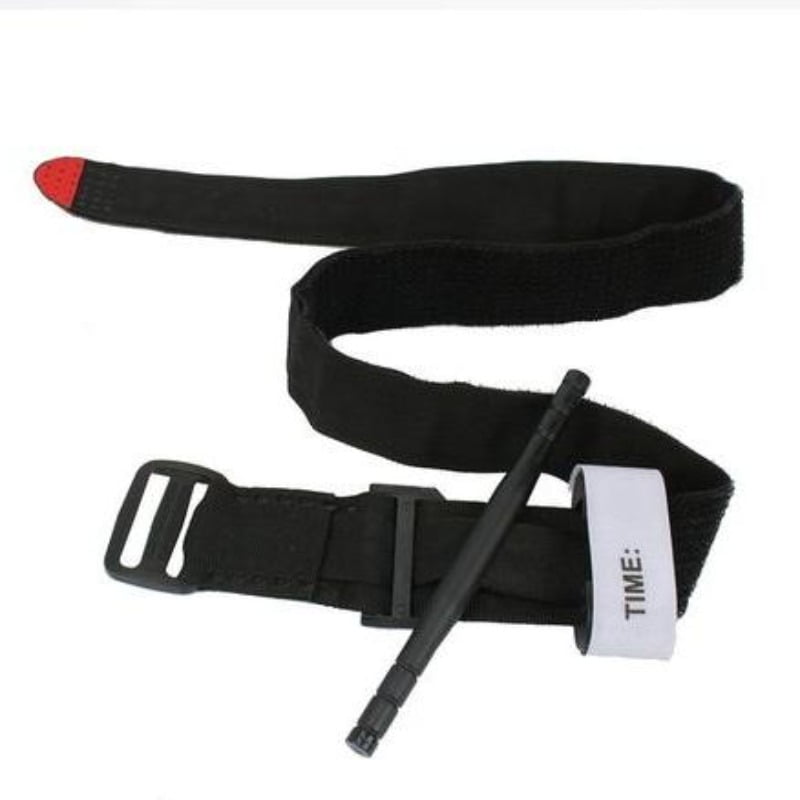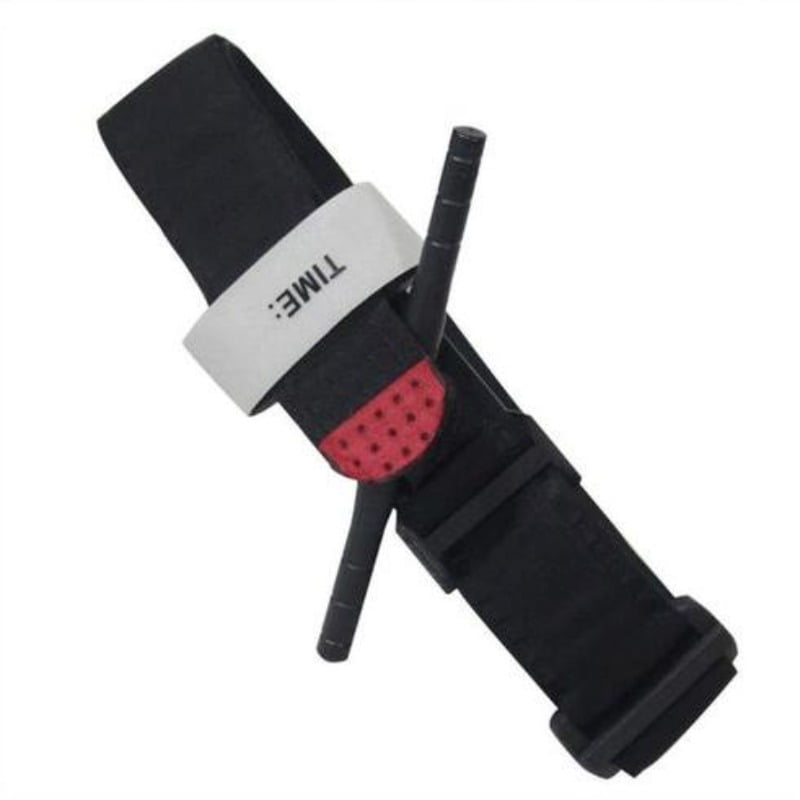Description
Introduction
Emergency Outdoor Tourniquet is an important first aid tool. When someone is injured and bleeding, its proper use can save lives. It can be used outdoors or in an emergency. It helps stop heavy bleeding.
First place the tourniquet above the wound about 5 to 10 centimeters from the wound. Then wrap the strap around the limb and secure it with a clasp. Next, tighten the band until the blood flow decreases or stops. This step is very significant because the tourniquet needs to be tight enough to effectively stop the blood flow. This tourniquet is easy to apply. It is usually made of a strong material, such as nylon or rubber. The strap has an adjustable clasp.
Some tourniquets come with torsion bars. When using a torsion bar, insert it into a special hole and then turn clockwise until the blood flow is completely stopped. Finally, lock the torsion bar with a fixture on the tourniquet to prevent loosening. It can apply further pressure and make sure the tourniquet is tight enough.
Emergency Outdoor Tourniquet is one of the essential tools in outdoor activities. In this way, we can effectively respond to emergencies at critical times and protect ourselves and others. It can quickly stop bleeding in an emergency and prevent injuries. But at the same time, it is equally important to use and master some basic first aid knowledge correctly.
Parameters of the Emergency Outdoor Tourniquet
| Model NO. | DNOR -I07 |
| Material | Nylon belt, PE buckle, ABS rod |
| Size | 3.8 cm width, spread length: 95 cm |
| Color | Black |
| Weight | 70g |
| LOGO | A customized logo is accepted |
| Package | 1 x neutral pp bag |
| MOQ | We have sufficient inventory, so a small order is accepted |
| Origin | Hebei |
| HS Code | 6307900000 |
| Production Capacity | 50000 PCS/Month |
Features of the Emergency Outdoor Tourniquet
One-Handed Operation
One of the standout features of the Emergency Outdoor Tourniquet is its one-handed operation capability. This design is particularly beneficial in situations where the user may have sustained an injury themselves or is tasked with assisting others while managing their limitations. With the ability to apply the tourniquet single-handedly, individuals can quickly secure it around the affected limb, enabling swift hemostatic intervention. This critical functionality reduces the time it takes to address life-threatening bleeding, thereby increasing the chances of a positive outcome for the patient.
Adjustable Size
The adjustable size feature of the tourniquet makes it suitable for a wide range of users and scenarios. Whether applied to a child or an adult, the tourniquet can be easily modified to fit various limb sizes. This adaptability is vital in emergencies where injuries can vary significantly, and the need for a snug, secure fit is paramount. The adjustable nature of the tourniquet ensures that it can be effectively used on different parts of the body, allowing for comprehensive application in the event of both arterial and venous bleeding.
Cold-Resistant Technology
In outdoor emergencies, environmental factors can pose additional challenges. The Emergency Outdoor Tourniquet is equipped with cold-resistant technology, ensuring that it remains functional and reliable in extreme weather conditions. Whether faced with frigid temperatures in winter or wet environments, this feature guarantees that the tourniquet will not degrade or become ineffective due to cold exposure. This reliability is crucial for outdoor enthusiasts, first responders, and anyone who may find themselves in remote locations where access to medical care is limited.
Multi-Use Capabilities
The Emergency Outdoor Tourniquet is an incredibly versatile and essential tool designed not only for traumatic injuries but for a wide range of medical emergencies. Its multi-use functionality makes it indispensable for outdoor enthusiasts, adventurers, or anyone involved in high-risk activities. This adaptability adds significant value to the tourniquet, allowing it to serve multiple purposes in different circumstances. Its ability to transition between different medical uses makes it an essential item for anyone involved in outdoor activities, first aid responders, or survival situations, offering peace of mind knowing you’re prepared for a variety of emergencies.
Functions of the Emergency Outdoor Tourniquet
Hemostasis for Arterial or Venous Bleeding
The primary function of the Emergency Outdoor Tourniquet is to achieve hemostasis, which refers to stopping or controlling bleeding, particularly in cases involving arterial or venous hemorrhaging. When a person sustains a severe injury, especially from trauma to large blood vessels, the ability to quickly and effectively control the bleeding is critical to prevent life-threatening blood loss. In such cases, applying the tourniquet is one of the most effective means of reducing or halting the flow of blood. By applying direct, localized pressure to the affected area, the tourniquet constricts the blood vessels, creating a tight seal that restricts blood flow to the injured limb or area. This is particularly important when arteries are involved, as arterial bleeding can result in rapid blood loss, often spurting in pulses with each heartbeat. The tourniquet effectively reduces this hemorrhage, minimizing the risk of shock and preventing the body from losing vital blood supply.
Importance in Emergency Situations
In outdoor and remote environments, access to immediate medical care is often limited, and the time it takes to reach a hospital or summon emergency responders can be critical. The Emergency Outdoor Tourniquet is a vital tool in these situations, offering individuals and first responders a means to manage severe bleeding until help arrives. Its compact design and ease of use make it accessible in situations where other medical supplies or interventions may be unavailable or impractical. In emergencies, the tourniquet serves as a first line of defense, effectively buying time for the injured person and improving their chances of survival. By controlling blood flow, it helps maintain vital signs such as blood pressure and heart rate, preventing the onset of hypokalemic shock—a condition caused by severe blood loss that can lead to organ failure and death if not addressed quickly.






Reviews
There are no reviews yet.